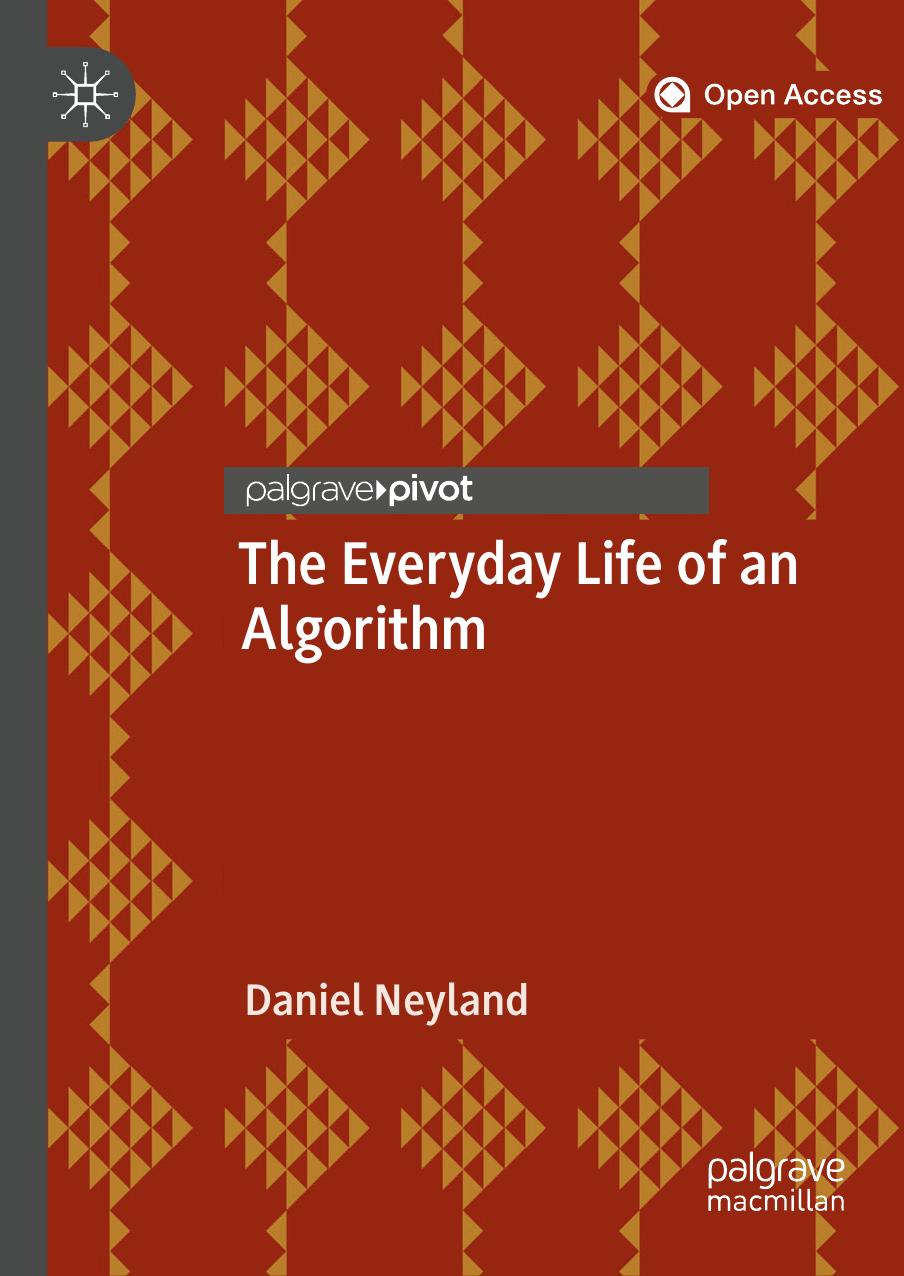The Everyday Life of an Algorithm by Daniel Neyland

Author:Daniel Neyland
Language: eng
Format: epub, pdf
ISBN: 9783030005788
Publisher: Springer International Publishing
We can think of our algorithms on these terms: they establish a finite list of entities (human-shaped objects , luggage-shaped objects, bounding boxes and close-cropped images), entered into varied relations (object action states such as moving the wrong way or abandoned), of possible hierarchies (particularly with the coordinators’ interest in selling the technology in the future, see Chapter 6). That the algorithms will be the entities responsible for imposing this hierarchy of relevance on everyday life, suggests they will play a key part in the formulation of this initial step towards deletion , among a complex array of relations also involving other system components, the spaces in which the system operates and so on.
This notion of calculative agency builds on a history of STS work on calculation . This includes studies of how accuracy is constructed (MacKenzie 1993), the accomplishment of numeric objectivity (Porter 1995), trading, exchange and notions of equivalence (Espeland and Sauder 2007; MacKenzie 2009), among many other areas. The kinds of concern articulated in these works is not focused on numbers as an isolated output of calculation . Instead, numbers are considered as part of a series of practical actions involved in, for example, solving a problem (Livingston 2006), distributing resources, accountabilities or responsibilities for action (Strathern 2002), governing a country (Mitchell 2002) and ascertaining a value for some matter (Espeland and Sauder 2007; MacKenzie 2009). Taking on these ideas, we can say that our algorithms are not only involved in classifying human-shaped and other objects and their action states, but also their relevance and irrelevance. The algorithms are involved in producing both quantities (a number of alerts, a complex means to parameterise visual data, the production of metadata and bounding boxes) and qualities (issuing or not issuing an alert, deciding between relevance and irrelevance). This is the starting point for the neologism of qualculation (Cochoy 2002; Thrift 2004). For Callon and Law: Qualculation implies qualification. Things have to qualify before they can enter a process of qualculation … this can be … done in an endless number of ways. With an endless range of mechanisms and devices. (2005: 715)
Download
The Everyday Life of an Algorithm by Daniel Neyland.pdf
This site does not store any files on its server. We only index and link to content provided by other sites. Please contact the content providers to delete copyright contents if any and email us, we'll remove relevant links or contents immediately.
| Algebra | Calculus |
| Combinatorics | Discrete Mathematics |
| Finite Mathematics | Fractals |
| Functional Analysis | Group Theory |
| Logic | Number Theory |
| Set Theory |
Modelling of Convective Heat and Mass Transfer in Rotating Flows by Igor V. Shevchuk(6408)
Weapons of Math Destruction by Cathy O'Neil(6220)
Factfulness: Ten Reasons We're Wrong About the World – and Why Things Are Better Than You Think by Hans Rosling(4715)
A Mind For Numbers: How to Excel at Math and Science (Even If You Flunked Algebra) by Barbara Oakley(3262)
Descartes' Error by Antonio Damasio(3250)
Factfulness_Ten Reasons We're Wrong About the World_and Why Things Are Better Than You Think by Hans Rosling(3218)
TCP IP by Todd Lammle(3158)
Fooled by Randomness: The Hidden Role of Chance in Life and in the Markets by Nassim Nicholas Taleb(3083)
Applied Predictive Modeling by Max Kuhn & Kjell Johnson(3043)
The Tyranny of Metrics by Jerry Z. Muller(3032)
The Book of Numbers by Peter Bentley(2935)
The Great Unknown by Marcus du Sautoy(2664)
Once Upon an Algorithm by Martin Erwig(2625)
Easy Algebra Step-by-Step by Sandra Luna McCune(2606)
Lady Luck by Kristen Ashley(2556)
Police Exams Prep 2018-2019 by Kaplan Test Prep(2517)
Practical Guide To Principal Component Methods in R (Multivariate Analysis Book 2) by Alboukadel Kassambara(2515)
All Things Reconsidered by Bill Thompson III(2374)
Linear Time-Invariant Systems, Behaviors and Modules by Ulrich Oberst & Martin Scheicher & Ingrid Scheicher(2348)
